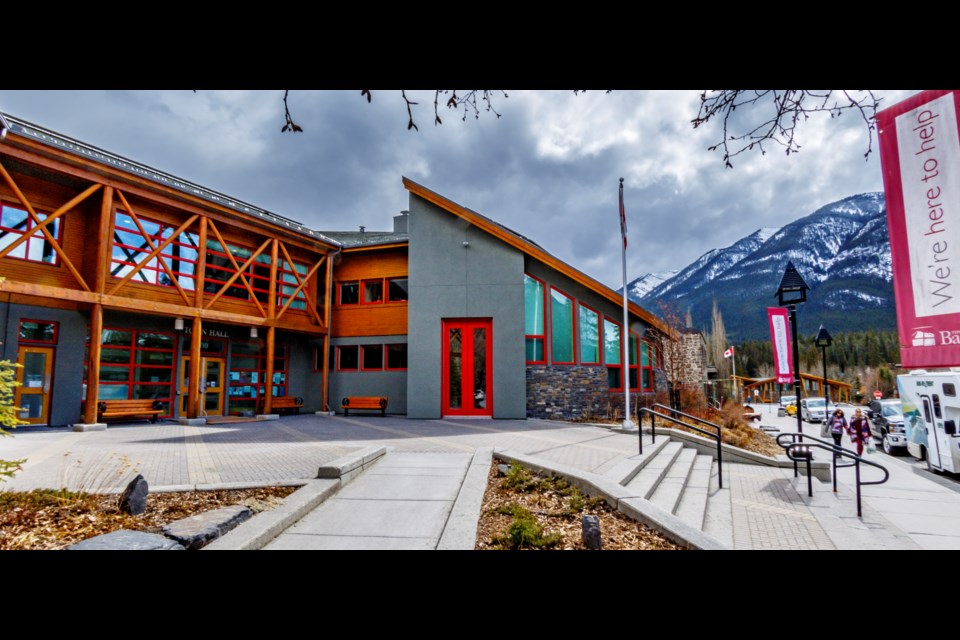BANFF – An annual report on Town of Banff facilities showed a drop in energy consumption and emissions between 2022 and 2023.
The report indicated a total of 14,236 megawatt hours (MWh) were used between natural gas and electricity in 2023 compared to 15,714 MWh in 2022 for a roughly nine per cent drop in energy use.
Town facilities saw a decrease in greenhouse gas emissions of 4,815 carbon dioxide equivalent (CO2e) in 2022 to 4,474 CO2e in 2023.
“Administration is working diligently on improving the use of energy in our assets. ... Planning for energy efficiency upgrades has been integrated into the capital maintenance budget process so that opportunities for upgrades are utilized,” stated a staff report.
Phillip Leberer, the Town’s energy coordinator, told council at its July 8 meeting that emissions at Town facilities have seen a “continuous decline since 2016, with our goal being a 50 per cent reduction by 2030”.
He said the Town is projected to reach a 52 per cent reduction of 2016 levels by 2030.
In 2022, natural gas and electricity cost the Town $1.05 million and increased to $1.18 million. The biggest reason, Leberer said was an increase in the carbon tax and changes to the way transmission and distribution charges are calculated.
He noted the Town’s use of solar and biomass has increased in recent years, with the biomass district heating system in the operations area of the industrial compound coming online in 2021. The system creates clean emissions and eliminates the use of fossil fuels to heat four municipal-owned buildings.
The staff report indicated projects such as adding LED lighting, the solar array at Fenlands recreation centre, maintenance and improvements on buildings such as the waste transfer station, fleet shop and wastewater treatment plan aided in the decrease in energy usage.
In addition, the Banff fire hall is expected to undergo design of energy retrofit this year and a projected capital project in 2025, expanding the Fenlands solar array, continued building maintenance and improvements and ongoing design retrofit scope for a staff accommodation at 552 Banff Ave.
The report highlighted improvements to the electric grid in Alberta continue to be “the main driver behind emission reductions in the corporate portfolio,” but “without significant improvements throughout the municipal portfolio … the goal of reducing carbon emissions by 50 per cent until 2030 will likely not be achieved.”
Energy consumption for Town-owned buildings is grouped into four tiers, with Tier 1 making up about 60 per cent of the Town’s energy consumption, Tier 2 at 30 per cent, Tier 3 at eight per cent and Tier 4 about two per cent.
The top two biggest energy users are Fenlands recreation centre and the wastewater treatment plant.
“Roughly 60 per cent of the total corporate electricity demand originates from operating water/wastewater services,” stated the report. “This includes extracting fresh water from the town’s aquifer, pumping water and wastewater around the community, and treating it at the [water and wastewater treatment plant]. Any reduction in water consumption therefore leads to a significant reduction in electricity demand.”
The report also emphasized since natural gas is largely used for space heating, whether it’s a colder or warmer winter can impact usage rates.
The staff report noted the Roam transit storage facility in the industrial compound has natural gas consumption included in the report since it uses the district heating network, electric energy used is excluded. However, the data is reported in an appendix, but consumption isn’t added due to it being operated by the transit commission.
In 2023, the Town’s solar array created 403 MWh of electricity, with 65 per cent of it being used in municipal-owned buildings and the remainder sold to the electrical grid.
“The use of solar electricity in municipal buildings saved 198 tonnes CO2e from our municipal emissions portfolio in 2023,” according to the report.




